|
As Storm Eunice raged outside yesterday, 27 listeners were introduced to Mompou's 'Musica Callada', books 1 & 2 book-ending the 63-minute 'immersion in music' that was Pianoscapes #44. After having been immersed in the preparation of the music over the past couple of months, I found it a real joy to share it. The quiet and reflective nature of most of the programme made for a very focused experience: intense concentration for me, of course, but also drawing the listeners in closer, and casting its spell over them all. By requesting the audience to refrain from applause, an uninterrupted sequence of music was allowed to unfold over an extended duration; and the cumulative effect of all those bell-sounds, harmonic twists and turns, the space between the notes and the weather outside, made for a hypnotic and consciousness-altering experience - for me, and, from the feedback I received afterwards, for the listeners too. I was very happy not to have to stop for applause, across a programme of 22 pieces: it's 'not about me' - it's about the music, and the journey that the music takes you (and me) on.
And if and when we are fortunate enough to 'touch music', then how lucky we are! "Music doesn't come in a gift parcel", writes Catherine David at the end of chapter 2: "It is the mirage of the quest." She writes eloquently about the process of work on technique, the meaning of 'practice' and the goal of 'touching music', in the 2 chapters that I've included below - well worth a read for all who aspire to develop as musicians. And finally from me, a quote from Michael Pisaro, in his liner notes for James Rushford's recording of 'Musica Callada'. Perhaps if we were to touch music too deeply we would, as mere mortals, be burnt up. Perhaps the best that we can do is keep striving, and maybe we come close, and that's enough... Discuss! "Notes wander in the pale light, seeking their place in the melody and the slats on the floor. They are hesitant, reluctant to assert themselves, don’t want to be observed too closely... We spy on the music, listen indirectly, around the chords, to the silences between them... Looking directly at the heart of the music would be like looking at the sun" Chris Long, Monday 21st February 2022 From 'The Beauty of Gesture':
0 Comments
Increasingly, I'm hearing the bells in the music.The bells are there from the outset. The first piece, 'Angelico', begins with a symmetrical 'tone formation' - A & B, D& E - two major seconds separated by a minor third - and it is out of this that a melody emerges. The 3 notes below the melody chime like a bell, hanging in space, as the melody floats above. Then follow three quite different pieces; as Eric Daub mentions in his excellent analysis of Musica Callada, "While the presence of contrasts within the individual pieces is usually rather subtle, the contrasts encountered between the pieces can be quite pronounced". When we reach #5 we are "taken into a musical world that is concerned with the evocative power of a single sonority". I was listening to this piece while driving the other day, and the performance (by James Rushford) struck me (pun intended?) in a way it never had before. These are clearly bells; I'd never heard the chords in this particular piece as bells before, after 30 years of knowing this music - and the harmonies Mompou has written must have been derived from a study of the actual overtones of bells. The dissonances arise from major sevenths and minor ninths... The bells continue to underpin the music as we go further into Book 1, and then into Book 2. Nos. 11 and 12 are both very bell-like, to my ears: 11 has a bright carillon-like theme at the opening and closing, like an announcement; no 12 has "colourfully dissonant metallic sonorities" [Eric Baum] which move into passages using the octatonic scale. The use of this scale to produce magical and mystical effects has precedents in 20th C music, most notably in the music of Scriabin, and Stravinsky. In his blog "The Departing Landscape', Steven D Foster describes 'Musica Callada' as a sacred music: "I consider Musica Callada to be a sacred work of art, and there are several ways in which I have become certain of this fact. First of all, when I listen to Mompou's music I become entranced by its sweet melodies, its constant other-worldly ringing of bells, its palpable and sensitive use of silent spaces, and its elegant dissonances which are pervaded with transcendent charm. All this is to say that the music absorbs my attention, opens my heart and transports me to beautiful unknown worlds. " He goes on - "The third chapter of Wilfred Mellers' book Le Jardin Retrouve, The Music of Frederic Mompou is devoted to bells. He begins the chapter with some interesting history: "The musical synonym for 'pre-consciousness" is the bell. Both real bells (inverted cups, usually of metal, hit with an attached clapper or externally activated hammer) and crotals (hollowed gourd-like objects with a free body, such as pea or pebble, inserted) may be said to belong to God in that they reveal the acoustical properties of Nature. Some 26,000 years before Christ the Chinese Emperor Chuan Hao 'struck the bell and called the attention of the people, so that he could teach them righteousness'; the teaching came after the submission to Nature. Chinese bells were decorated with dragons and other fabulous creatures least demons should threaten the transcendental power whereby bells sustained the Universal Harmony; without truly resonating bells the universe might collapse. Most ancient oriental cultures regarded bells as agents and activators of magic. Hindus found in them the circle, hemisphere and lotus basic to their cosmology . . . "Vladimir Jankelevitch writes about the resounding bells in Mompou's Musica Callada in an essay "Mompou's Message" which can be found--in English translation!--in the booklet that comes with the 4CD set entitled Mompou : Complete Piano Works on the Brilliant Classics label. It is an important essay; here are some excerpts taken from it: "Mompou's piano pieces constantly allude to bronze . . . the bronze of bells vibrates and resounds in the musical space where Mompou's compositions are heard . . . especially in Musica Callada (Silent Music): here one hears seraphic bells which chime softly between heaven and earth. "It is hard to decide what to admire most in these wonderful piano pieces where the pressure of each finger has been subtly considered. "Profundo" (deeply): this indication for performance enamels all Mompou's works, as if wanting to penetrate in the deepest part of the soul; the sonorities are sedative, calming, serious, vehement, or sometimes mysteriously hammered out, and often, they are soft and captivating. The sweet melodies create a sonorous light in the depth. Between the airy notes and the deep ones, an intermediate voice stands out, which sketches the internal song of harmony . . . "In the whole work the musician lets another voice, originating in the "resonating" strings, sing . . . and this second voice, this secret voice, this "internal voice" addresses us as if it were the voice of the soul. This unspoken music gives the music we hear its vibrant fullness. From all this comes a sonority which is at the same time hidden and delicately articulated, a fleeting sonority, and yet, luminous, evasive but unattached . . . [for] distance and space underlie all the impressions and images in Mompou . . . "It seems right to me that, over the years, the mystic silence represented more and more for Federico Mompou the intimacy of the internal state towards which he always moved. The serenity he always searched for is even more static than withdrawn. The existence of his aestheticism was confirmed . . . above all in the four books of Musica Callada. . . . What Mompou wants is the search for "sonorous solitude"; to reach the intangible point where music becomes the very voice of silence, where silence itself becomes music. . . . Mompou aspired to let the voice of the pure soul sing, the soul alone, the soul itself in itself . . . Vladimir Jankelevitch, "Mompou's Message" published in the Brilliant Classics booklet. (my underlines)"
The written extract above is from "The Pianist", a novel by Manuel Vazquez Montalban. It is true that the sonority and clarity - and poetry - of Chopin's music was of central importance to Federico Mompou; indeed, Mompou wrote his own set of variations on one of his namesake's melodies. With every session of playing Musica Callada, I'm furthering my understanding that poetry, sonority and rubato are cornerstones of the language of both of these composers. Wilhelm von Lenz, who studied with both Liszt and Chopin, believed rubato formed the very heart of Chopin’s playing: “He would say, ‘A piece lasts for, say, five minutes, only in that it occupies this time for its overall performance; internal details are another matter. And there you have rubato.’” “Rubato” may be written in only nine of Chopin’s manuscripts - only nine! -but is essential to nearly all of them. “Look at these trees,” Franz Liszt said, “the wind plays in the leaves, stirs up life among them, the tree remains the same, that is Chopinesque rubato.” With Mompou, where does the borrowing of time begin and end? The composer... [please take over, Mr Antonio Iglesias - ]
This evening, in my work on Mompou's music I've been particularly relishing the chords in Book 2: there are many different characters to be found here. In no 12, the harmonies bring the music of Olivier Messiaen to my mind: And in no.16, Bill Evans makes an appearance - I'll hand back to Mr Iglesias for the final words tonight - Signing off -
|
| As the government goes 'into meltdown', I'm enjoying losing (or rather, finding) myself in the pages of 'Musica Callada'. As 2021 turned into 2022 I made the commitment to a performance of all 4 books of this mysterious work by Catalan composer Federico Mompou, as my first ‘major’ performance project of the year - the idea had been forming in my mind during the second half of 2021, and moved closer as I discovered the recording by James Rushford, paired with his own very abstract work ‘See The Welter”. I've know 'Musica Callada' for decades, but this discovery via Bandcamp was revelatory: I was struck by James Rushford's sleeve notes and by his profound interpretation - and as a result, finally, to use a phrase used this week by Johnson - untruthfully in his case, of course - "I get it". Mr Mompou and I go back a long way: I’ve been intrigued by his music since I was a hairy hippy piano student in the 1980’s. My teacher Mary introduced me to the world of Satie and stave-free scores, and Mompou followed hot on Satie's heels – ‘Cants Magics’ and ‘Cancion y Danza 6’ are the pieces that I remember Mary introducing me to. The former of these was the inspiration for a lot of my own compositional ‘juvenalia’ – suites of quasi-mystical musical noodlings, notated with ‘hanging’ ties, ‘space-time notation, and a spurning of barlines. Titles like “Phantasms & Majicks”, “Soul Cakes”, “Biomechanoid”… And then, to University... In my second year, between studies, I had a part-time gig working as a ballet-school accompanist in Wimbledon (Margaret Fleming School of Dance), and later in Kingston for Ms Fleming's young protégé Christina Ross. Christina was studying down the road at the Roehampton Institute, and asked me to put some music together for a choreography assignment that she had to create and perform. I ended up returning to Mompou's Cants Magics – and it turned out to be great music to dance to. I dimly recall the performance: I hope my playing did justice to Christina's work, and that I wasn’t too nervous (or dressed too ridiculously). Around this time - early 90's - on one of my many trips Up To Town, and to Foyles at Charing Cross Road, Covent Garden in particular; on the top floor, where I acquired my Giacinto Scelsi scores, my score of Arvo Part’s ‘Tabula Rasa’ and my copy of Shostakovich’s Preludes & Fugues (book 1); that’s where I got my copy of Mompou’s ‘Piano Album’, an Editions Salabert publication. And it’s here, I think, that I first encountered ‘Musica Callada’. I’ve been playing Book 1 since that time - c. thirty years now... In addition, I've played a lot of Mompou's other music - Cants Magics, Impresions Intimas, Preludes... and during that time I’ve looked through books 2-4 of Musica Callada, enjoying the change in typeface in the printed music, and the typically Mompou-ian (?) appearance of the musical shapes on the page. Around 1994 I was given a CD of Herbert Henck’s interpretation of all 4 books, but... ... Somehow Books 2-4 never seemed to engage me enough for me to get stuck into them; maybe there was too much other music to play. I guess the time wasn't right. Last year, on hearing James Rushford’s interpretation, suddenly the music connects with me. I hear it with fresh ears; the time is right now for this music to speak to me and I, in return, to be a voice for it to be heard. |
And as I learn more about each of the 28 pieces by playing and researching - making time for the music, listening deeply - the journey into Mompou's language becomes increasingly fascinating. I'll be posting here, hopefully regularly, offering glimpses into this process.
Stay tuned!
Signing off -
Chris
4 Feb 2022
Musica Callada Books 1 & 2 - to be performed in 'Pianoscapes' on February 20th.
See 'Pianoscapes' page on this website.
Stay tuned!
Signing off -
Chris
4 Feb 2022
Musica Callada Books 1 & 2 - to be performed in 'Pianoscapes' on February 20th.
See 'Pianoscapes' page on this website.
Details
Archives
September 2022
July 2022
June 2022
February 2022
June 2020
February 2016







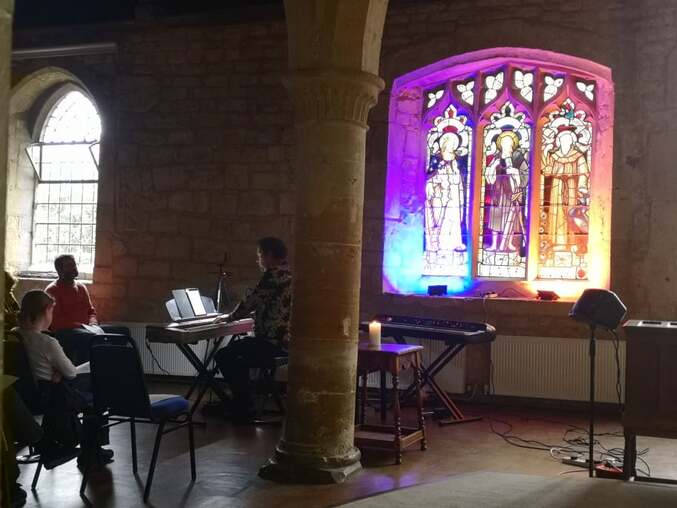



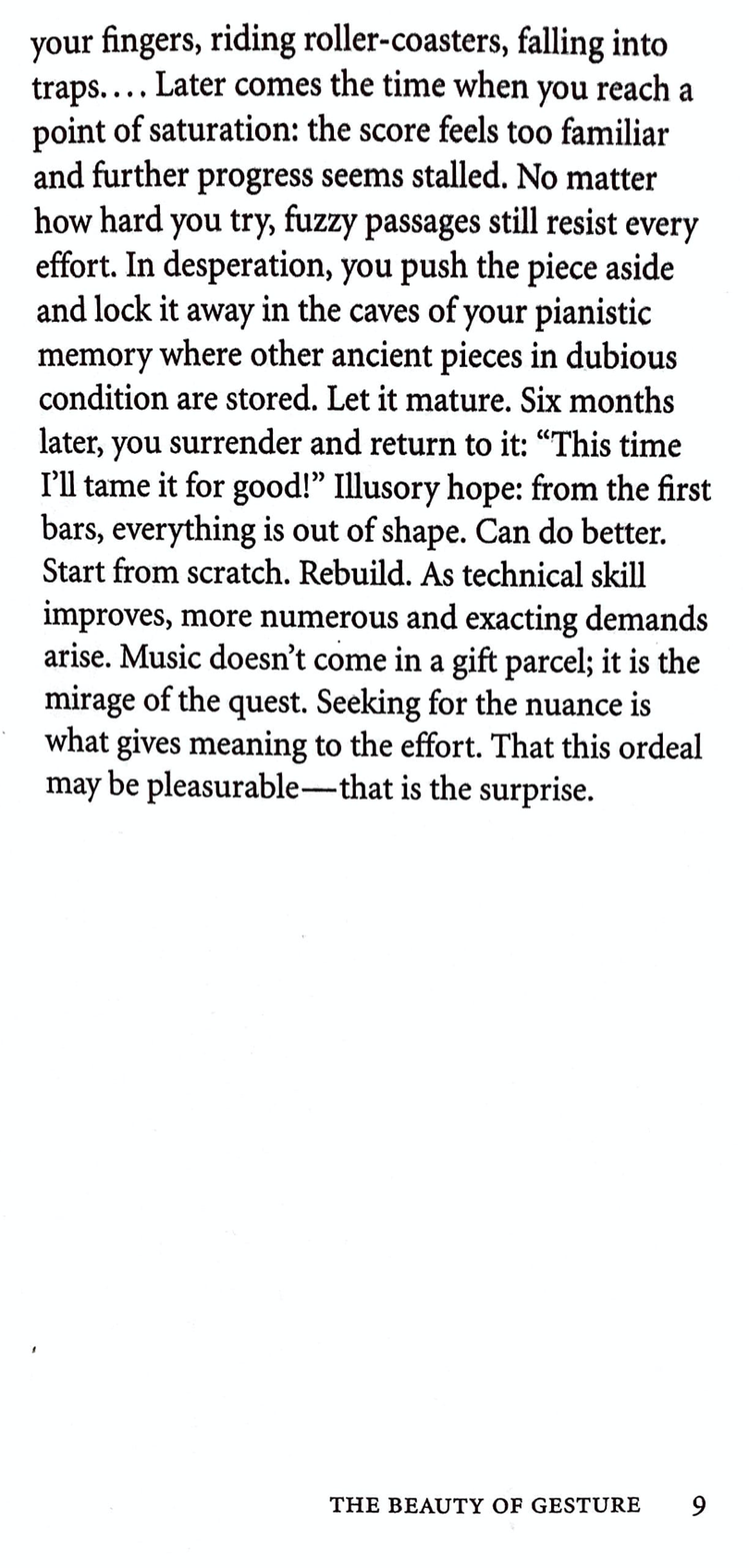


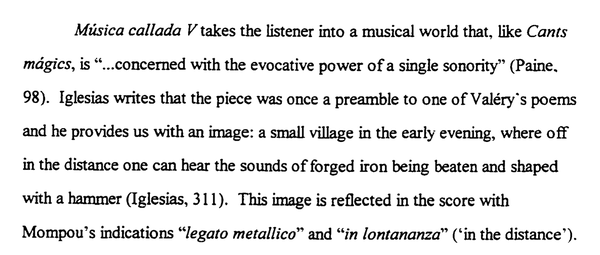

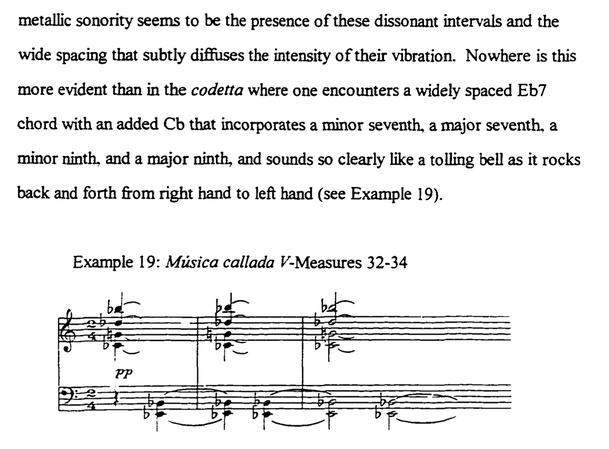









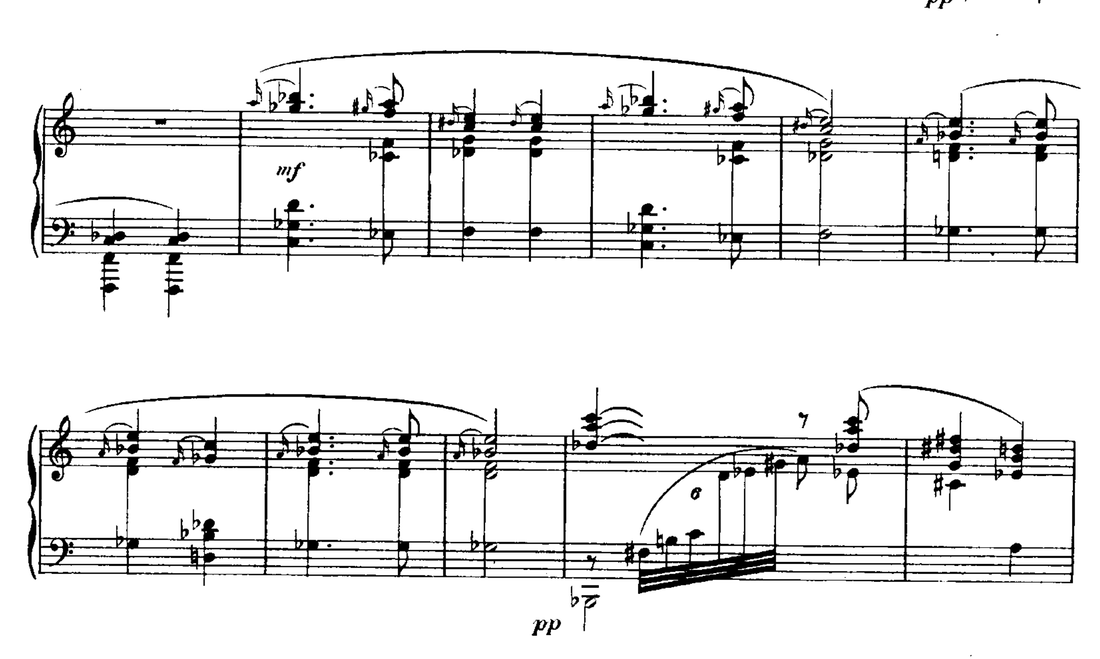






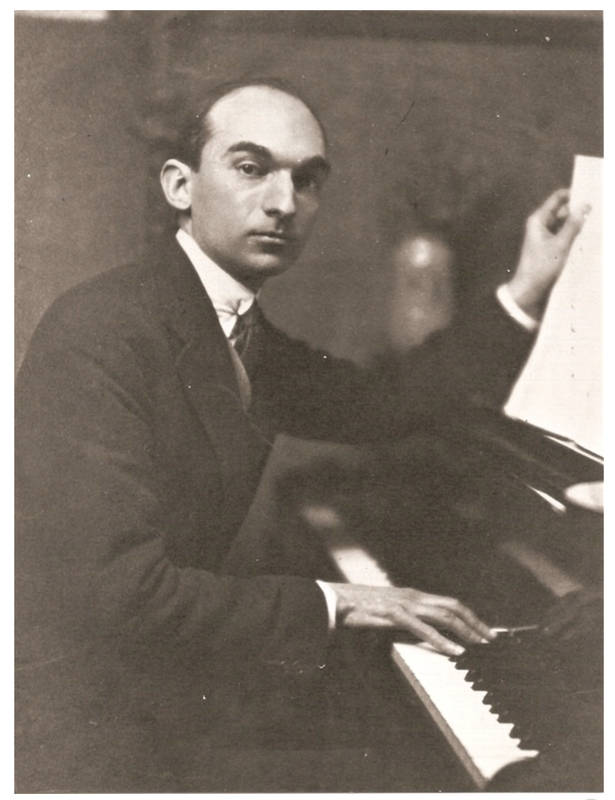



 RSS Feed
RSS Feed
